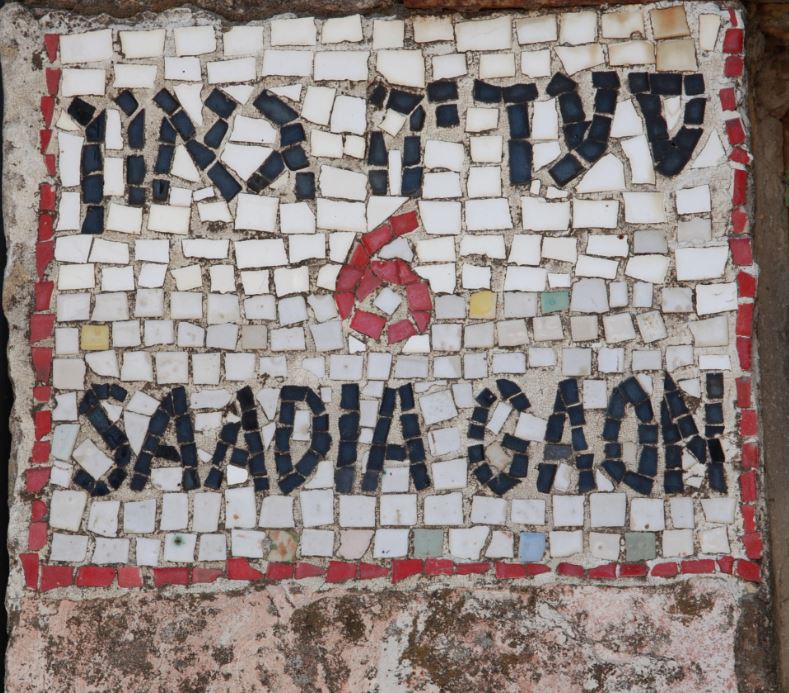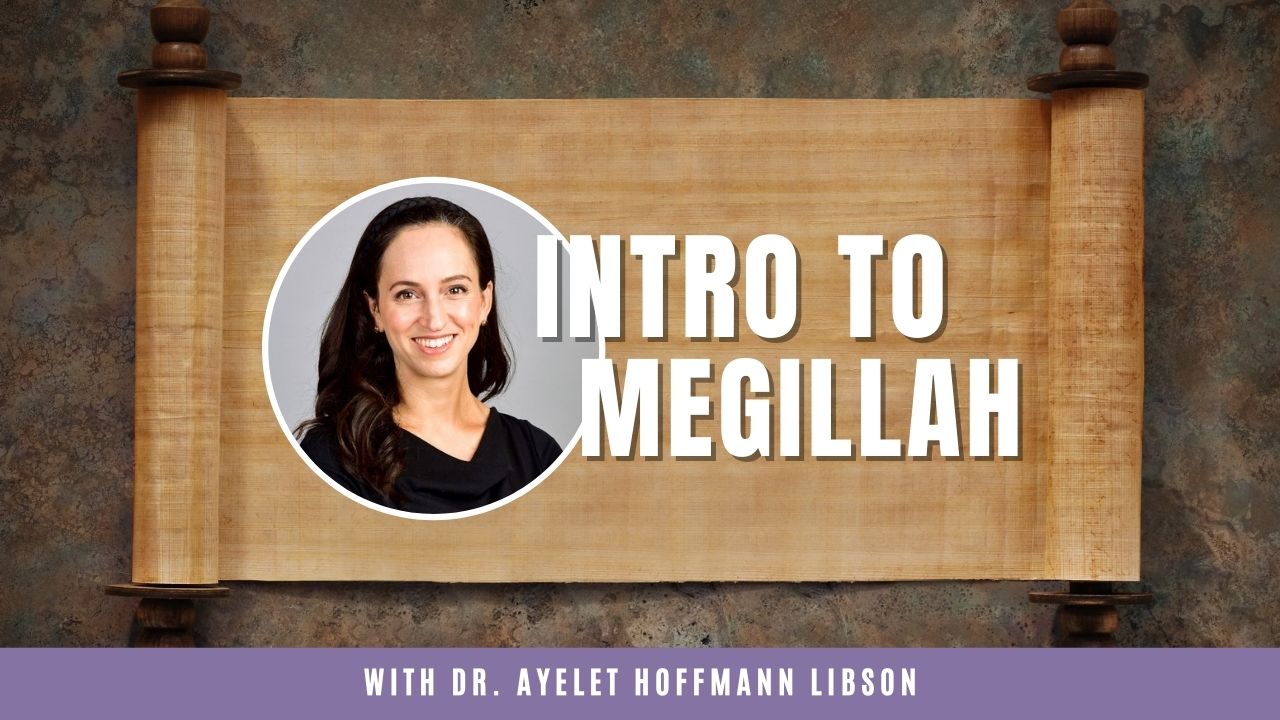What is the root of the debates regarding the three times of year that the rabbis instituted for tithing the animals?How does one tithe the animals? Is it ok if the process wasn’t done exactly as stipulated?
This week’s learning is sponsored by Robert and Paula Cohen in loving memory of Joseph Cohen, Yosef ben Moshe HaCohen, z”l. “He was hard working, loved to sing, esp. as a chazan, and was very dedicated to his family and community.”
Want to dedicate learning? Get started here:


Today’s daily daf tools:
This week’s learning is sponsored by Robert and Paula Cohen in loving memory of Joseph Cohen, Yosef ben Moshe HaCohen, z”l. “He was hard working, loved to sing, esp. as a chazan, and was very dedicated to his family and community.”
Today’s daily daf tools:
Delve Deeper
Broaden your understanding of the topics on this daf with classes and podcasts from top women Talmud scholars.
New to Talmud?
Check out our resources designed to help you navigate a page of Talmud – and study at the pace, level and style that fits you.
The Hadran Women’s Tapestry
Meet the diverse women learning Gemara at Hadran and hear their stories.
Bekhorot 58
כְּדֵי שֶׁתְּהֵא בְּהֵמָה מְצוּיָה לְעוֹלֵי רְגָלִים.
The reason is so that animals will be readily available to those ascending to Jerusalem for the pilgrimage Festivals. The animals are tithed shortly before each of the Festivals so that their owners will refrain from selling or killing them until those times, when they gather them together to set aside the animal tithe. As a result, there are plenty of non-sacred animals ready to be sold, for food or offerings, to those on their way to Jerusalem.
וְאַף עַל גַּב דִּתְנַן: עַד שֶׁלֹּא הִגִּיעַ הַגּוֹרֶן מוּתָּר לִמְכּוֹר וְלִשְׁחוֹט — נִיחָא לֵיהּ דְּלִיתְעֲבִיד מִצְוָה בְּמָמוֹנֵיהּ, וַהֲדַר לִזְבּוֹן וְלֵיכוֹל.
And even though we learned in the mishna: Until the time designated for gathering arrives, it is permitted to sell and slaughter the animals, which means that there is no obligation to keep the animals until those dates and there is no concern that the owners will sell the animals before tithing them. This is because a person prefers to perform a mitzva with his money, by separating the animal tithe, and only afterward sell or eat those animals.
וְאַמַּאי קָרֵי לֵיהּ ״גּוֹרֶן״? דְּטָבְלָה כְּגוֹרֶן.
The Gemara asks: And why does the tanna call the time designated for gathering animal tithe goren, which literally means threshing floor? The Gemara explains that it is due to the fact that the arrival of this time renders the halakhic status of new animals like that of untithed produce gathered on a threshing floor, as from the time that produce is gathered on the threshing floor one becomes obligated to tithe it. Likewise, from this stage onward it is prohibited to slaughter the new animals until they have been tithed.
וְכַמָּה ״פְּרָס״? פֵּירֵשׁ רַבִּי יוֹסֵי בְּרַבִּי יְהוּדָה: אֵין פְּרָס פָּחוֹת מֵחֲמִשָּׁה עָשָׂר יוֹם.
The mishna states that according to Rabbi Akiva the times for tithing animals are adjacent to Passover, Shavuot, and Sukkot. The Gemara asks: And how much is adjacent [peras]? Rabbi Yosei, son of Rabbi Yehuda, explained that the term adjacent means not less than fifteen days.
מַאי מַשְׁמַע? אָמַר רַבִּי אֲבָהוּ: ״פְּרוֹס״ — פַּלְגָא. פַּלְגָא דְּמַאי? פַּלְגָא דְּהִלְכוֹת פֶּסַח, כִּי הָא דְּתַנְיָא: שׁוֹאֲלִין וְדוֹרְשִׁין בְּהִלְכוֹת פֶּסַח קוֹדֶם לְפֶסַח שְׁלֹשִׁים יוֹם. רַבָּן שִׁמְעוֹן בֶּן גַּמְלִיאֵל אוֹמֵר: שְׁתֵּי שַׁבָּתוֹת.
The Gemara asks: From where is this inferred? Rabbi Abbahu said that the term peros means half. The Gemara inquires: Half of what? The Gemara answers: Half of the time during which one must learn the halakhot of Passover, and this is like that which is taught in a baraita: One asks about and teaches the halakhot of Passover for thirty days before Passover. Rabban Shimon ben Gamliel says: One begins studying those halakhot two weeks before the Festival.
בֶּן עַזַּאי אוֹמֵר: בְּעֶשְׂרִים וְתִשְׁעָה בַּאֲדָר, בְּאֶחָד בְּסִיוָן. בְּמַאי קָמִיפַּלְגִי רַבִּי עֲקִיבָא וּבֶן עַזַּאי? רַבִּי עֲקִיבָא סָבַר: אֲדָר הַסָּמוּךְ לְנִיסָן זִימְנִין מָלֵא וְזִימְנִין חָסֵר, זִימְנִין דְּמִיקְּלַע בְּיוֹם שְׁלֹשִׁים וְזִימְנִין דְּמִיקְּלַע בְּעֶשְׂרִים וְתִשְׁעָה, וּמִשּׁוּם הָכִי לָא קְבִיעַ לֵיהּ זְמַן. וּבֶן עַזַּאי סָבַר: אֲדָר הַסָּמוּךְ לְנִיסָן לְעוֹלָם חָסֵר, הִילְכָּךְ קְבִיעַ לֵיהּ זְמַן בְּעֶשְׂרִים וְתִשְׁעָה בַּאֲדָר.
§ The mishna states that ben Azzai says the times are on the twenty-ninth of Adar, on the first of Sivan, and on the twenty-ninth of Av. The Gemara asks: With regard to what principle do Rabbi Akiva, who says fifteen days before Passover, and ben Azzai, who refers to the twenty-ninth of Adar, disagree? The Gemara answers: Rabbi Akiva holds that the month of Adar that immediately precedes Nisan is sometimes a full month of thirty days and sometimes a defective month of only twenty-nine days. Therefore, sometimes the fifteenth day before Passover occurs on the thirtieth of Adar and sometimes it occurs on the twenty-ninth of Adar. Due to that reason Rabbi Akiva does not fix a time by date, but simply states fifteen days before Passover. And ben Azzai holds that the Adar that immediately precedes Nisan is always defective. Therefore, he fixes a time in the calendar that the animals must be tithed, which is on the twenty-ninth of Adar.
בְּאֶחָד בְּסִיוָן — אַיְּידֵי דְּלָא נְפִישִׁי, אִי אָמְרַתְּ לִיקַדֵּים לִיעַשַּׂר — עַד דְּמָטֵי רֶגֶל שָׁלְמִי לְהוּ.
With regard to the fact that ben Azzai does not require fifteen days before Shavuot but maintains that the animals must be tithed on the first of Sivan, the reason is that since there are not so many animals born between the previous time of tithing and this one, if you say that the owner should tithe earlier, then before the pilgrimage Festival arrives all the animals will already be gone, their sales having been completed. If so, there will be no animals remaining for those coming to Jerusalem for Shavuot.
בְּעֶשְׂרִים וְתִשְׁעָה בְּאָב וְכוּ׳. בֶּן עַזַּאי לְטַעְמֵיהּ, דְּאָמַר: הָאֱלוּלִין מִתְעַשְּׂרִין בִּפְנֵי עַצְמָן.
The mishna teaches that ben Azzai says the last gathering time is on the twenty-ninth of Av, rather than fifteen days before Sukkot. The Gemara notes that ben Azzai conforms to his standard line of reasoning, as he said: The animals born in Elul are tithed by themselves, because it is uncertain whether the new year for animal tithes begins on the first of Tishrei or the first of Elul. Consequently, he sets the time for animal tithe before the beginning of Elul to avoid the possibility of tithing animals born in one year with animals born in the next year.
וְלִיעַשְּׂרִינְהוּ בְּיוֹם שְׁלֹשִׁים! זִימְנִין דִּמְחַסְּרִין לֵיהּ לְאָב, וּבָעֵינַן לְמִיעְבַּד הֶכֵּירָא בְּחָדָשׁ וְיָשָׁן.
The Gemara challenges: But if so, let him require that one tithe the animals on the thirtieth day of Av, which is the last day before Elul begins. The Gemara explains: Sometimes the month of Av is defective, i.e., it has only twenty-nine days, and therefore the thirtieth day after the start of Av is the first day of Elul. And we are required to implement a distinction between the new animals born in Elul and the old animals born in Av, which is considered to be the previous year.
רַבִּי אֶלְעָזָר וְרַבִּי שִׁמְעוֹן אוֹמְרִים: בְּאֶחָד בְּנִיסָן, בְּאֶחָד בְּסִיוָן וְכוּ׳. בְּאֶחָד בְּנִיסָן — כְּרַבָּן שִׁמְעוֹן בֶּן גַּמְלִיאֵל, דְּאָמַר: שְׁתֵּי שַׁבָּתוֹת. בְּאֶחָד בְּסִיוָן — כְּדַאֲמַרַן.
§ The mishna teaches that Rabbi Elazar and Rabbi Shimon say that the times are on the first of Nisan, on the first of Sivan, and on the twenty-ninth of Elul. The Gemara explains with regard to the first date: On the first of Nisan, this is in accordance with the opinion of Rabban Shimon ben Gamliel, who says one begins studying and teaching the halakhot of Passover two weeks before the Festival. And Rabbi Elazar and Rabbi Shimon hold that the second time for animal tithe is on the first of Sivan, and this is as we said with regard to the opinion of ben Azzai, so that there will be enough animals born since the previous time.
בְּעֶשְׂרִים וְתִשְׁעָה בֶּאֱלוּל — רַבִּי אֶלְעָזָר וְרַבִּי שִׁמְעוֹן לְטַעְמַיְיהוּ, דְּאָמְרִי: בְּאֶחָד בְּתִשְׁרִי רֹאשׁ הַשָּׁנָה לְמַעְשַׂר בְּהֵמָה.
Finally, they hold that the third time for animal tithe is on the twenty-ninth of Elul, since Rabbi Elazar and Rabbi Shimon conform to their standard line of reasoning, as they say: On the first of Tishrei is the new year for animal tithe. All animals born prior to that date belong to the previous year for tithe and are tithed as a single unit, whereas those born after that date belong to the next year for tithe, and therefore there is a distinction drawn between the new animals and the old.
וְלָמָה אָמְרוּ בְּעֶשְׂרִים וְתִשְׁעָה בֶּאֱלוּל, וְלֹא אָמְרוּ בְּאֶחָד בְּתִשְׁרִי? מִפְּנֵי שֶׁהוּא יוֹם טוֹב וְכוּ׳. וְתִיפּוֹק לֵיהּ, דְּבָעֵינַן לְמֶעְבַּד הֶכֵּירָא בְּחָדָשׁ וְיָשָׁן!
§ The mishna teaches: And why did Rabbi Elazar and Rabbi Shimon say the twenty-ninth of Elul and why did they not say the first of Tishrei? It is due to the fact that the first of Tishrei is the festival of Rosh HaShana and one cannot tithe on a Festival; consequently, they brought it earlier, to the twenty-ninth of Elul. The Gemara raises a difficulty: But let the mishna derive it from the fact that we require a distinction between the new animals born in Tishrei and the old animals born in Elul, which is considered to be the previous year.
חֲדָא וְעוֹד קָאָמַר, חֲדָא — דְּבָעֵינַן לְמִיעְבַּד הֶכֵּירָא בְּחָדָשׁ וְיָשָׁן, וְעוֹד — מִפְּנֵי שֶׁהוּא יוֹם טוֹב, וְאִי אֶפְשָׁר לְעַשֵּׂר בְּיוֹם טוֹב מִשּׁוּם סְקַרְתָּא.
The Gemara answers: The mishna states one reason and adds another. One reason is that we require a distinction between the new animals and the old animals. And another reason is because it is the festival of Rosh HaShana and one cannot tithe on a Festival, due to the sakreta, a lead-based red paint for marking every tenth animal, as explained on 58b. It is prohibited to apply paint on a Festival.
רַבִּי מֵאִיר אוֹמֵר: בְּאֶחָד בֶּאֱלוּל רֹאשׁ הַשָּׁנָה לְמַעְשַׂר בְּהֵמָה. בֶּן עַזַּאי אוֹמֵר וְכוּ׳. תַּנְיָא, אָמַר בֶּן עַזַּאי: הוֹאִיל וְהַלָּלוּ אוֹמְרִים כָּךְ, וְהַלָּלוּ אוֹמְרִים כָּךְ — הָאֱלוּלִין מִתְעַשְּׂרִין לְעַצְמָן.
§ The mishna teaches that Rabbi Meir says: The beginning of the new year for animal tithe is on the first of Elul. Ben Azzai says: The animals born in Elul are tithed by themselves, due to the uncertainty as to whether the halakha is in accordance with the opinion of Rabbi Meir or in accordance with the opinion of Rabbi Elazar and Rabbi Shimon. The Gemara notes that it is taught in a baraita that ben Azzai said: Since these Rabbis, Rabbi Elazar and Rabbi Shimon, say this, that the first of Tishrei is the beginning of the new year for animal tithe, and those, i.e., Rabbi Meir, say that the first of Elul is the beginning of the new year for animal tithe, the animals born in Elul are tithed by themselves.
וְלִיחְזֵי טַעְמֵיהּ דְּמַאן מִסְתַּבַּר! וְכִי תֵּימָא: לָא מָצֵי קָאֵי אַטַּעְמַיְיהוּ, וְהָתַנְיָא: בֶּן עַזַּאי אוֹמֵר: כׇּל חַכְמֵי יִשְׂרָאֵל דּוֹמִין עָלַי כִּקְלִיפַּת הַשּׁוּם חוּץ מִן הַקֵּרֵחַ הַזֶּה!
The Gemara raises a difficulty: But let ben Azzai see whose opinion is more reasonable, and decide accordingly. And if you would say that it is not possible for him to establish their reasoning, that is difficult: But it is taught in a baraita that ben Azzai says: All the Sages of Israel appear to me to be as unimpressive in their intellect as garlic peel, except for this bald one, i.e., Rabbi Akiva.
אָמַר רַבִּי יוֹחָנָן: מִפִּי הַשְּׁמוּעָה אֲמָרוּהָ, מִפִּי חַגַּי זְכַרְיָה וּמַלְאָכִי.
Rabbi Yoḥanan says that ben Azzai was unable to establish their reasoning in this particular case, as they said their opinions by tradition, from a chain of transmission stretching back to Haggai, Zechariah, and Malachi, the last of the prophets. Each Sage claimed his tradition concerning their ruling was the correct one. Since this dispute is based on tradition, it cannot be resolved by logical reasoning.
תַּנְיָא: בְּאֵיזֶה צַד אָמַר בֶּן עַזַּאי הָאֱלוּלִים מִתְעַשְּׂרִין לְעַצְמָן? נוֹלְדוּ לוֹ חֲמִשָּׁה בְּאָב וַחֲמִשָּׁה בֶּאֱלוּל — אֵין מִצְטָרְפִין, חֲמִשָּׁה בֶּאֱלוּל וַחֲמִשָּׁה בְּתִשְׁרִי — אֵין מִצְטָרְפִין, חֲמִשָּׁה בְּתִשְׁרִי וַחֲמִשָּׁה בְּאָב מִצְטָרְפִין.
It is taught in a baraita: In what manner did ben Azzai say that animals born in Elul are tithed by themselves? For example, if five animals were born in Av and five were born in Elul, they do not combine to make ten animals that require tithing. Likewise, if five were born in Elul and five in Tishrei, they do not combine. But if five were born in Tishrei and five were born in the following Av, they do combine.
פְּשִׁיטָא! מַהוּ דְּתֵימָא, כִּי הֵיכִי דְּמַפְסְקִי שָׁנִים, מַפְסְקִי גֳּרָנוֹת, קָא מַשְׁמַע לַן.
The Gemara asks: This is obvious; what is the novelty of the ruling of the baraita? The Gemara answers: This ruling is necessary lest you say that just as years separate between animals that may be tithed together, so too, the designated times for gathering and tithing the animals separate between those animals born before and after each one of them. If so, animals born in Tishrei and those born in the following Av would not combine. Therefore, the baraita teaches us that these designated times do not prevent animals born before and after them from being tithed together.
כְּדִתְנַן: חֲמִשָּׁה לִפְנֵי רֹאשׁ הַשָּׁנָה וַחֲמִשָּׁה לְאַחַר רֹאשׁ הַשָּׁנָה — אֵין מִצְטָרְפִין, חֲמִשָּׁה לִפְנֵי הַגּוֹרֶן וַחֲמִשָּׁה לְאַחַר הַגּוֹרֶן — הֲרֵי אֵלּוּ מִצְטָרְפִין.
This is as we learned in the mishna: If five were born before Rosh HaShana and five after Rosh HaShana, those animals do not combine to be tithed; if five were born before the time designated for gathering and five after the time designated for gathering, those animals combine to be tithed.
אָמַר רָבָא: לְדִבְרֵי בֶּן עַזַּאי, נוֹלְדוּ לוֹ חֲמִשָּׁה בְּאָב וַחֲמִשָּׁה בֶּאֱלוּל וַחֲמִשָּׁה בְּתִשְׁרִי, כּוֹנְסָן לַדִּיר לְהִתְעַשֵּׂר,
Rava says: According to the statement of ben Azzai, if five animals were born in Av and five animals were born in Elul and five animals were born in Tishrei, the owner gathers them all in a pen to be tithed,
וְנוֹטֵל אֶחָד מִן הָאֱלוּלִין וְהַשְּׁאָר פְּטוּרִין, מִמָּה נַפְשָׁךְ: אִי בְּאֶחָד בֶּאֱלוּל רֹאשׁ הַשָּׁנָה — דֶּאֱלוּל וְתִשְׁרִי מִצְטָרְפִין וּדְאָב פְּטוּרִים, וְאִי בְּאֶחָד בְּתִשְׁרִי רֹאשׁ הַשָּׁנָה — דְּאָב וֶאֱלוּל מִצְטָרְפִין דְּתִשְׁרִי פְּטוּרִין.
and he takes one of the animals born in Elul as the tithe, and the remainder are exempt, whichever way you look at it. Rava explains: If the new year for animal tithe is on the first of Elul, then the animals born in Elul and Tishrei combine to form a total of ten, and the animals born in Av are exempt, as they are from the previous year and there are less than ten of them. And if the new year is on the first of Tishrei, the animals born in Av and Elul combine to form a total of ten, whereas the animals born in Tishrei are exempt.
מַאי אָמְרַתְּ: לִצְטַרְפוּ לְגוֹרֶן אַחֵר? עֲשִׂירִי וַדַּאי אָמַר רַחֲמָנָא, וְלֹא סָפֵק.
The Gemara raises a difficulty with regard to the opinion of Rava: What are you saying? Why are the five animals born in Tishrei exempt? Let them combine with animals at another time of gathering to form a total of ten. Rather, what is the reason one is not required to tithe these five animals born in Tishrei? It is because the Merciful One states: “And all the tithe of the herd or the flock, whatever passes under the rod, the tenth shall be sacred to the Lord” (Leviticus 27:32), from which it is derived that a definite tenth must be tithed, and not an uncertain tenth, i.e., an animal that is not definitely the tenth. If the first of Elul is the new year, then the five born in Tishrei would have combined with the five of Elul and are exempt. Therefore, the obligation in this case is uncertain.
פְּשִׁיטָא! מַהוּ דְּתֵימָא לִגְזוֹר, דִּילְמָא אָתֵי לְמִישְׁקַל מֵהָנָךְ, קָא מַשְׁמַע לַן.
Rava said he takes one of the animals born in Elul as the tithe. The Gemara asks: Isn’t it obvious that he must take one of those animals, as those are the only ones concerning which the obligation is definite? The Gemara answers: It is necessary for Rava to specify this lest you say the Sages should decree that one should not even take one of the animals born in Elul as a tithe, as perhaps he might come to take from those that were born in Av or Tishrei by mistake. Therefore, Rava teaches us that the Sages are not concerned about this error.
מַתְנִי׳ בְּאֵי זֶה צַד מְעַשְּׂרִין? כּוֹנְסָן לַדִּיר, וְעוֹשֶׂה לָהֶם פֶּתַח קָטָן כְּדֵי שֶׁלֹּא יְהוּ שְׁנַיִם יְכוֹלִין לָצֵאת כְּאֶחָת, וּמוֹנִין: אֶחָד, שְׁנַיִם, שְׁלֹשָׁה, אַרְבָּעָה, חֲמִשָּׁה, שִׁשָּׁה, שִׁבְעָה, שְׁמוֹנָה, תִּשְׁעָה, וְהַיּוֹצֵא עֲשִׂירִי סוֹקֵר בְּסִיקְרָא וְאוֹמֵר: ״הֲרֵי זֶה מַעֲשֵׂר״. לֹא סְקָרוֹ בְּסִיקְרָא, וְלֹא מְנָאָן בַּשֵּׁבֶט, אוֹ שֶׁמְּנָאָן רְבוּצִים אוֹ עוֹמְדִים — הֲרֵי אֵלּוּ מִתְעַשְּׂרִין.
MISHNA: In what manner does one tithe the animals? He gathers them in a pen and provides them with a small, i.e., narrow, opening, so that two animals will not be able to emerge together. And he counts the animals as they emerge: One, two, three, four, five, six, seven, eight, nine; and he paints the animal that emerges tenth with red paint and declares: This is tithe. Even if he did not paint it with red paint, or if he did not count the animals with a rod in accordance with the verse: “Whatever passes under the rod, the tenth shall be sacred to the Lord” (Leviticus 27:32), or if he counted the animals when they were prone or standing in place and did not make them pass through a narrow opening, these animals are tithed after the fact.
הָיָה לוֹ מֵאָה וְנָטַל עֲשָׂרָה, עֲשָׂרָה וְנָטַל אֶחָד — אֵין זֶה מַעֲשֵׂר. רַבִּי יוֹסֵי בְּרַבִּי יְהוּדָה אוֹמֵר: מַעֲשֵׂר. קָפַץ אֶחָד מִן הַמְּנוּיִין לְתוֹכָן — הֲרֵי אֵלּוּ פְּטוּרִין, מִן הַמְעוּשָּׂרִין לְתוֹכָן — כּוּלָּם יִרְעוּ עַד שֶׁיִּסְתָּאֲבוּ, וְיֵאָכְלוּ בְּמוּמָן לַבְּעָלִים.
But if he had one hundred animals and he took ten as tithe, or if he had ten animals and he simply took one as tithe, that is not tithe, as he did not count them one by one until reaching ten. Rabbi Yosei, son of Rabbi Yehuda, says: In that case too, it is tithe. If before the owner completed tithing his animals, one of those already counted jumped back into the pen among the animals that had not yet been counted, all those in the pen are exempt from being tithed, as each of them might be the animal that was already counted. If one of those animals that had been tithed, i.e., designated as the tenth, jumped back into the pen among the animals that had not yet been counted, creating uncertainty with regard to all the animals there which was the animal tithe, all the animals must graze until they become unfit for sacrifice, and each of them may be eaten in its blemished state by its owner once it develops a blemish.
גְּמָ׳ תָּנוּ רַבָּנַן: בְּאֵי זֶה צַד מְעַשֵּׂר? כּוֹנְסָן לַדִּיר, וְעוֹשֶׂה לָהֶם פֶּתַח קָטָן כְּדֵי שֶׁלֹּא יְהוּ שְׁנַיִם יְכוֹלִין לָצֵאת כְּאֶחָד, אִימּוֹתֵיהֶם מִבַּחוּץ וְהֵם מִבִּפְנִים, וְגוֹעוֹת, וְיוֹצְאוֹת לִקְרַאת אִמָּן.
GEMARA: The Sages taught in a baraita: In what manner does one tithe his animals? He gathers them in a pen and provides them with a small, i.e., narrow, opening so that two animals will not be able to emerge together. The mothers of those animals stand outside, and the newborn animals to be tithed are inside the pen. And the mothers bleat and the young ones emerge toward their mothers.
וְלַפְּקִינְהוּ אִינְהוּ! ״יַעֲבוֹר״ כְּתִיב, וְלֹא שֶׁיַּעֲבִירוּהוּ.
The Gemara asks: But why is it performed this way? Let the owner simply make them emerge from the pen by pushing them. The Gemara answers that it is written: “Whatever passes under the rod, the tenth shall be sacred to the Lord” (Leviticus 27:32). This means that the animal must pass under the rod of its own volition, and not that one will cause it to pass by pushing it out of the pen.
וְלִשְׁדֵּי לְהוּ יַרְקָא וְלִיפְּקוּ לְוָתֵיהּ! אָמַר רַב הוּנָא: גְּזֵירָה מִשּׁוּם לָקוּחַ וּמִשּׁוּם יָתוֹם.
The Gemara asks: But why not simply throw the animals a vegetable outside the pen, and they will go out toward it to eat it? Rav Huna said: The use of the mothers is a rabbinic decree due to a purchased animal and due to an orphan, i.e., a baby animal whose mother died before it was born. Neither of these animals is subject to tithing. Since neither a purchased animal nor an orphaned animal will have its mother outside calling to it, these animals will remain in the pen and will not be tithed accidentally.
תָּנוּ רַבָּנַן: ״כׇּל אֲשֶׁר יַעֲבֹר תַּחַת״ — פְּרָט לַטְּרֵיפָה שֶׁאֵינָהּ עוֹבֶרֶת תַּחַת הַשָּׁבֶט. מִצְוָה לִמְנוֹתָן בְּשֵׁבֶט. לֹא מְנָאָן בְּשֵׁבֶט, אוֹ שֶׁמְּנָאָן רְבוּצִים אוֹ עוֹמְדִים, מִנַּיִן? תַּלְמוּד לוֹמַר: ״הָעֲשִׂירִי קֹדֶשׁ״ — מִכׇּל מָקוֹם.
The Sages taught in a baraita: “Whatever passes under the rod, the tenth shall be sacred to the Lord” (Leviticus 27:32); this teaches that all animals may be sanctified as animal tithe, excluding a tereifa, as on account of its physical state it does not pass under the rod. The phrase “under the rod” teaches that it is a mitzva to count them with a rod. If one did not count them with a rod, or he counted them when they were prone or standing, from where is it derived that the tenth animal is nevertheless sanctified? The verse states: “The tenth shall be sacred,” indicating that the tenth animal is sacred in any case, even if it was not tithed correctly.
וְאֵין לִי אֶלָּא שֶׁקְּרָא שְׁמוֹ ״עֲשִׂירִי״, לֹא קְרָא שְׁמוֹ ״עֲשִׂירִי״ מִנַּיִן? תַּלְמוּד לוֹמַר ״יִהְיֶה קֹּדֶשׁ״ מִכׇּל מָקוֹם. יָכוֹל הָיוּ לוֹ מֵאָה וְנָטַל עֲשָׂרָה, עֲשָׂרָה וְנָטַל אֶחָד, יָכוֹל יִהְיוּ מְעוּשָּׂרִין? תַּלְמוּד לוֹמַר ״עֲשִׂירִי״, וְאֵין זֶה עֲשִׂירִי. רַבִּי יוֹסֵי בְּרַבִּי יְהוּדָה אוֹמֵר: מַעֲשֵׂר.
The baraita continues: And I have derived only that an animal that one explicitly called by the name of the tenth one is the animal tithe. From where do I derive that the tenth animal is sanctified even if one did not explicitly call it the tenth one? The verse states: “Shall be sacred.” This teaches that it shall be sacred in any case, even if it was not called the tenth. One might have thought with regard to one who had one hundred animals and simply took ten of them without counting them, or one who had ten animals and took one of them without counting, one might have thought that they should be considered tithed. Therefore, the verse states: “The tenth,” and this animal that he removed is not the tenth, as he did not count the animals. Rabbi Yosei, son of Rabbi Yehuda, says: Even if he simply removed one animal from ten without counting, that animal is tithe.
מַאי טַעְמֵיהּ דְּרַבִּי יוֹסֵי בְּרַבִּי יְהוּדָה? סָבַר לֵיהּ כְּאַבָּא אֶלְעָזָר בֶּן גּוֹמֵל, דְּתַנְיָא: אַבָּא אֶלְעָזָר בֶּן גּוֹמֵל אוֹמֵר: ״וְנֶחְשַׁב לָכֶם תְּרוּמַתְכֶם״ — בִּשְׁתֵּי תְרוּמוֹת הַכָּתוּב מְדַבֵּר, אַחַת תְּרוּמָה גְּדוֹלָה, וְאַחַת תְּרוּמַת מַעֲשֵׂר.
The Gemara asks: What is the reason of Rabbi Yosei, son of Rabbi Yehuda? The Gemara answers: He holds in accordance with the opinion of Abba Elazar ben Gomel. As it is taught in a baraita that Abba Elazar ben Gomel says with regard to the verse: “And your teruma shall be reckoned to you as though it were the grain of the threshing floor” (Numbers 18:27), that in using the plural form of the term “your,” the verse speaks about two terumot. One is standard teruma, i.e. the grain of the threshing floor, and the other one is teruma of the tithe. The verse equates these two terumot.
כְּשֵׁם שֶׁהַתְּרוּמָה גְּדוֹלָה נִיטֶּלֶת בְּאוֹמֶד וּבְמַחְשָׁבָה —
Abba Elazar ben Gomel explains: Just as standard teruma is taken by estimate, as there is no requirement for the amount separated to be measured precisely, and it can be taken by thought, as one is not required to physically separate it before consuming the remaining produce,







































